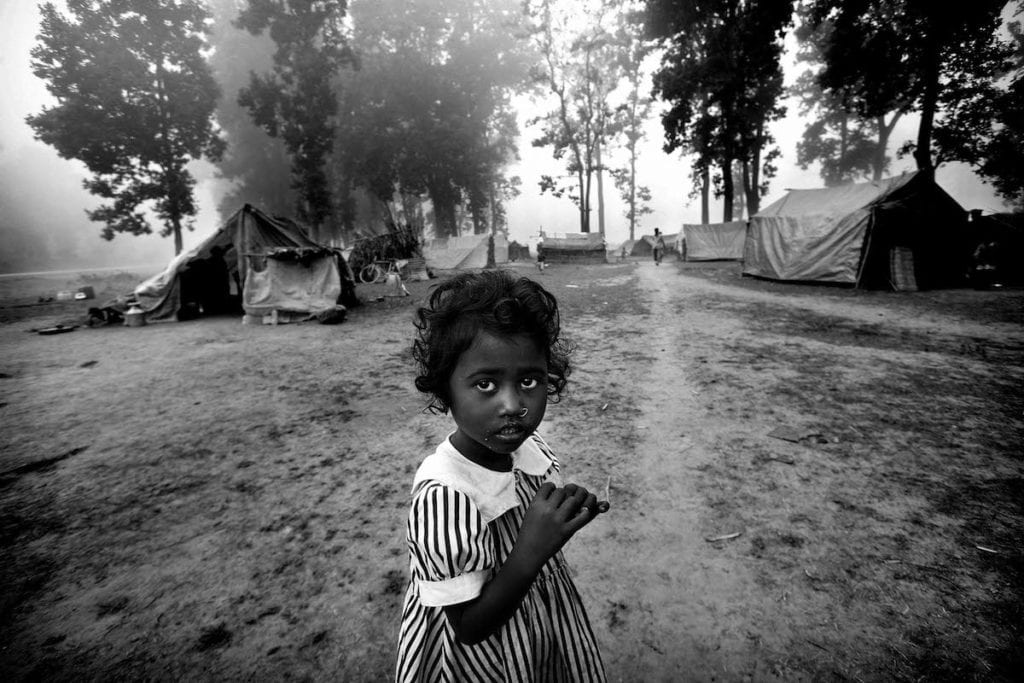The DJI Drone Photography Award is now open for entries, giving two photographers the chance to realise their dream drone-shot photography project! To mark the launch of the award, we spoke to photographer and licensed drone pilot Graeme Robertson.
For the last three years Guardian photographer Graeme Robertson has been learning to fly. He has soared high across a salmon farm in the Scottish lowlands, cruised over one of the UK’s largest Christmas tree suppliers and captured wild sea swimmers taking a dip off of the Cornish coast. There is one prerequisite: Robertson’s feet remain firmly on the floor.

Robertson is a licensed drone pilot and approaches drone photography with a certain pragmatism. “I don’t want to be that drone guy who is all about how fast and how high a drone can fly,” he says. “It’s about how a drone can make a project better. If I am using a drone just for the sake of using a drone, then I don’t use it.”
Instead the photographer uses a specialist camera drone to bring new depth and perspective to his work. “A drone goes up in the air so immediately you have a completely different viewpoint on a subject,” says Robertson, who uses DJI drones to take both film and photographs. “It can get the camera in situations where there’s no way you could put yourself. It can transform you into a photographer that can see everything.”
The H. Forman & Son salmon farm in Loch Hourn, Scotland. This footage was captured on Roberton’s DJI drone and formed part of a photo essay for The Guardian. © Graeme Robertson.
Robertson started his photography career in 1994 at Glasgow-based newspaper the Daily Record, later working for The Scotsman and The Herald. Since 2005, the photographer has worked for The Guardian as a staff photographer. His work for the British newspaper is wildly diverse: one minute documenting wars, conflicts and humanitarian crises across the world, the next creating a photo essay on the process of making chocolate Easter bunnies. In 2014, Robertson was nominated for the Taylor Wessing Photographic Portrait Prize for his portrait of a blind Ugandan child, part of his series taken while visiting social inclusion projects in Uganda and India with disability rights charity Sightsavers. With such diverse subject matter, photographing the world from multiple perspectives is crucial to Robertson’s practice.


In a recent short film that documents pensioners wild sea swimming in Cornwall, Robertson uses a drone to take aerial footage of the swimmers. The resulting shot captures the vastness of the ocean and is striking in isolating its subjects. “As a photographer, you can only do so much,” says Robertson, speaking of the project. “You go out in a boat with the swimmers, you can shoot them getting changed and photograph them freezing on the beach. But with a drone you can fly with them, you can feel what they are going through.”
Robertson first picked up a drone three years ago and has been perfecting his flying skills ever since. He is part of a burgeoning crop of photographers turning to drones as a means to diversify their practice and express themselves in new and creative ways.


Drones can simply go where humans cannot. They offer a new perspective and bring a flexibility that is rarely matched by a tripod or cumbersome equipment such as cranes. In recent years, drones have also become more affordable. This, coupled with the advancement of simple operating technology, has opened up drones to a new breed of creatives. “Once you’ve got to grips with certain things, the DJI Phantom 4 Pro is an easy machine to use,” says Robertson. “That was exactly what I wanted: I didn’t want something that was so technical that it took over my world.”
Robertson sits on the judging panel of the DJI Drone Photography Award, a competition that calls for photographers to submit ideas for a creative, drone-shot project. The two competition winners will each be provided with a DJI Phantom 4 Pro and the resulting series will be exhibited in a major London gallery, as well as receiving coverage on the British Journal of Photography.
Robertson, who will also mentor the competition winners, is seeking proposals with creative yet realistic objectives. “I will be looking for projects that can be delivered,” he says. “On a daily basis I get people with ideas that are not achievable because they feel that they can do anything with a drone.”

Much like Robertson’s approach, the DJI Drone Photography Award is seeking submissions where the use of a drone elevates the creative possibilities of a project. Here, the drone will be far from a gimmick reserved for the tech enthusiast, but rather a tool that, in reaching locations impossible on foot, opens the viewer’s eyes to new possibilities.
“Just because it is up in the air, it doesn’t mean that it is good. People often get lost in that,” says Robertson. “A drone has to add something to a project in order for me to take it seriously. The great work out there goes beyond aerial gimmickry and takes advantage of the ability of drone-shot imagery to deliver a totally fresh perspective on the subject matter. And there’s huge potential for that if you’re pushing yourself creatively.”
Elevate your photography with a new perspective! The DJI Drone Photography Award gives two photographers the opportunity to realise their drone-shot projects. Submit your proposal here!

The DJI Drone Photography Award is a DJI competition supported by British Journal of Photography. DJI is the world’s leading manufacturer in high-end drones. Please click here for more information on sponsored content funding at British Journal of Photography.
